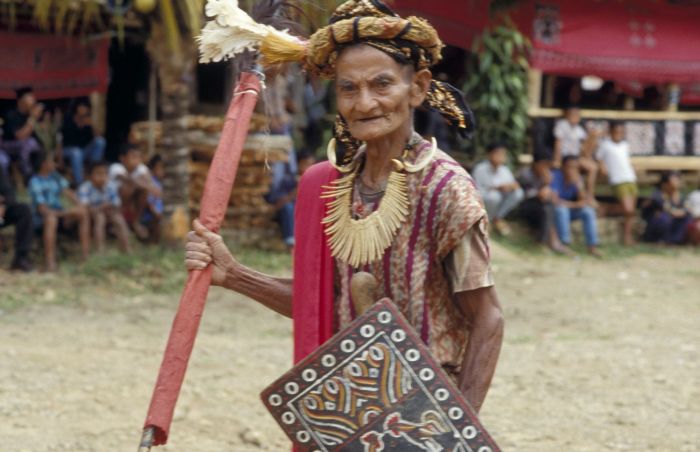
A woman pulls back a golden curtain and slips inside a room to speak to her husband, “Papa, Papa.”
The couple’s son enters the room with a tray and hands his father a meal of fish, rice and chilies.
Mother and son then quietly depart the father’s room.
“A touching family scene,” writes journalist Amanda Bennett. “Nothing that couldn’t happen anywhere on Earth. Except for one thing. Elisabeth’s husband, a former clerk in the city marriage bureau, has been dead for nearly two weeks.”
And thus begins a feature article in the freshly minted April issue of National Geographic, entitled, “When Death Doesn’t Mean Goodbye.”
In an age when many Americans are buried without their families ever getting to see the body at all—a straight line shot from the hospital to the funeral parlor to the grave, almost all of it encased in some sort of box or casket, and almost all of the work done by others—this article focuses on a remote and culturally vibrant part of the world that seems almost like another planet. This place of exalted death is called Toraja, a mountainous region of jungle populated by half a million people on the Indonesian island of Sulawesi. Here, villages are, “perched high on the side of cliffs or nestled deep in the valleys below,” and reachable mainly by, “winding, one-lane dirt paths carrying two-lane traffic that dodges dogs and toddlers along routes pocked with head-banging, watermelon-size ruts.”
About 90 percent of Torajans are Christian. Still, the people practice their traditional religion, called Aluk To Dolo, or Way of the Ancestors. “Here,” writes Bennett, “death trumps life. Torajans do not reject medical treatments for life-threatening conditions. Nor do they escape grief when loved ones die. But far from pushing death away, almost everyone here holds death at the center of life. Torajans believe that people aren’t really dead when they die and that a profound human connection lasts well past death.”
“Death for many Torajans,” Bennett continues, clearly impressed by the culture she has discovered deep in this strange jungle world, “is not a brick wall but a gauze veil. It is not a severing but just another kind of connection.”
She explains that bodies in a Torajan home are often kept out in the open for several days, preserved with formaldehyde and water so as not to rot. Relatives visit at this time, and bring food and offerings. But a funeral can still be many months away. In that time the body is transferred to a coffin, but one that will still be kept in the home. “We believe that even though the father is to macula (a sick person),” says one Torajan, “his soul is still in the house.”
As Bennett explains to readers early on, she is in Toraja for a specific reason.
“I made the rough trek here after years spent writing and speaking about an American way of death that glorifies medicine and drugs but fears death, which it considers a failure of technology or will,” she writes. “That leaves most Americans dying in institutions, when the majority say they would prefer to die in peace at home. After my husband, Terence, died, I began seeking alternatives. I have come here to explore a culture that is even more extreme, but in the opposite direction.”
I don’t want to give away any more secrets. Check out the article and the amazing photos that accompany it here. This is a part of the world that may actually be familiar to some Digital Dying readers. Below are a few other articles we have done on interesting death rituals in southeast Asia and the tropical Pacific.
In Vietnam Grieving Was Once For Years, Now It’s On A Website
The Spectacular Death Rituals of the Philippines
Out of Space, Asia Shoves Their Dead Into Futuristic Tubes
World’s Longest Funeral, On A Cramped Cargo Ship In The Middle Of The Pacific
In her article, Bennett keeps coming back to the original kernel of her curiosity: Just what does our fascination with these death rituals say about own traditions?
“Feeding the dead, letting bodies hang around, and opening coffins aren’t practices the rest of us will likely adopt anytime soon,” writes Bennett.
“Even so,” she continues. “I can’t help wondering if the more gradual rhythm and pacing of Torajan death practices don’t hew more closely to the actual racking and shuddering experiences of human grief than do our own more buttoned-up rituals.”









